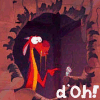
I’ve been spending a lot of time listening as opposed to pontificating lately, so my blog has fallen into the low post tides. When I asked what folks wanted to hear about the answers were (thankfully) not about writing(1) persay, but odds and ends. “The plight of the proletariat worker in today’s modern decadent capitalistic society” was one topic, and my friend Eryn joked about a “how to put your big girl pants on” post as well. I also had a request to share some Italian folk tales, which I’ll be pulling from my library. If you have ideas for a “Challenge Monica” post, share ’em in the comments below!(2)
On to catsup! Or is it ketchup? According to the Searchlight Recipe Book(3) published by The Household Magazine in Topeka, Kansas, it’s definitely catsup even though ketchup came first. And, what’s more, there’s multiple varieties of catsup as well, for at this point it roughly translates to sauce. Perhaps this is why there’s Apple, Cranberry, Raisin Cookies, and Ripe Cucumber recipes listed as options for catsup as well. First published in 1931, the Searchlight Recipe Book is, in point of fact, available on Amazon.com used. Proving once again, that if you can name an obscure book, they’ve probably got it.
Now, at this point in culinary history, catsup had been commercially produced for a number of years(4) but, many cookbooks ceased to list its ingredients because catsup was available to buy. This is partly why Searchlight fascinates me from a culinary perspective, because the recipes in this book are numerous indeed. From sugar sirup (Keeping with the original spelling) to oatmeal croquettes, ambrosia ice cream, and squirrel stew, this recipe book paints and interesting depiction of the ingredients available in the 1930s and 40s as well as the cultures involved. For example, there are recipes for Chow Mein(5) and Chop Suey, but the instructions for spaghetti are for cooking the pasta as opposed to making a dish.
Tomato Catsup
5 Quarts Tomato Pulp
2 Teaspoons Cinnamon
1 Teaspoon Paprika
1 Tablespoon Mixed Spices
1 Tablespoon Mustard
2 1/2 Cups Vinegar
3 Tablespoons Black Pepper
3 Tablespoons Salt
1 Large Onion, Chopped
3 Tablespoons, Cold Water
Prepare tomato pulp by washing and chopping tomatoes, cooking until soft, and rubbing through a sieve. Tie whole spices and onion in a thin bag. Mix mustard with cold water. Combine all ingredients. Cook slowly, stirring frequently, until thick.
For those of you who are mildly curious, here are the listed ingredients for Heinz Ketchup according to this website: Tomato Concentrate, Distilled Vinegar, High Fructose Corn Syrup, Corn Syrup(6), Salt, Spice, Onion Powder, Natural Flavoring.
(1) I feel generic writing advice tends to make a lot of new writers insecure, because if something doesn’t fit it they internalize that advice as if they’re doing something wrong. I’d much rather spend my time motivating folks to actually write, because so much is learned through experience and taking risks.
(2) Summarily, troll spray will be used liberally and without discretion should they drop by in the comments. I realize some of you might be championing troll rights, but this is not that space.
(3) I try to collect vintage or historical cookbooks when I can, and this one was a gift from a relative.
(4) Here’s a link to the history of catsup. “Ketchup comes from the Hokkien Chinese word, kê-tsiap, the name of a sauce derived from fermented fish.”
(5) Not sure if you’ve seen it, but the documentary The Search for General Tso addresses the availability of Chinese food in America specifically.
(6) High Fructose Corn Syrup and Corn Syrup are sugar in disguise. No wonder why folks abandoned the original recipe.

